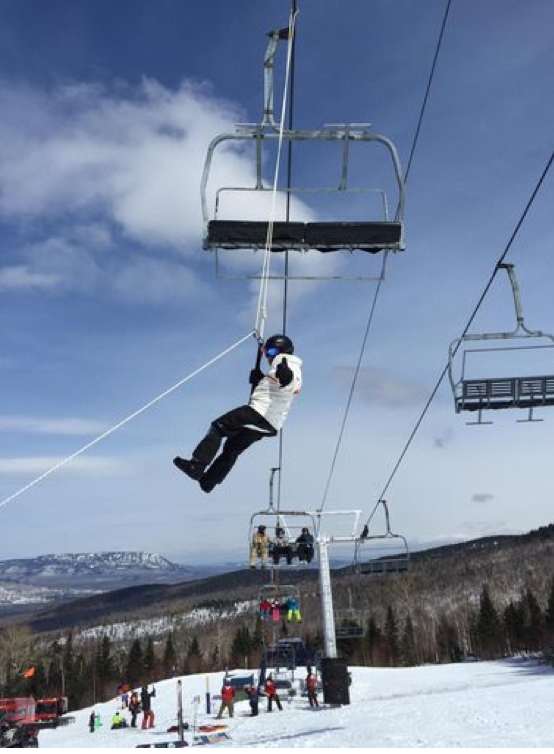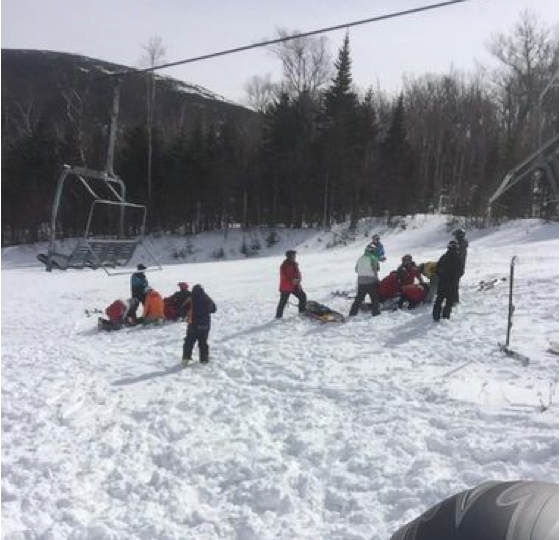A rollback incident on Sugarloaf’s King Pine lift injured seven guests and sent three to the hospital with non-critical injuries. All three were reported in stable condition on Saturday afternoon, according to hospital spokeswoman Jill Gray.
The incident occurred at about 11:30 a.m. The lift rolled back nine chairs. At least two skiers jumped from their chairs about 12 to 15 feet above the snow, while others yell for passengers to get off the lift. A total of 204 people were evacuated from the lift about two hours later.
The investigation began shortly after the evacuation of the lift was complete. Preliminary findings revealed that the trigger for the incident was a major mechanical failure in one of two gearboxes connecting the lift’s electric motor to its drive bullwheel.
The gearbox failure effectively de-coupled the bullwheel from the lift’s primary service brake, which is located on the drive shaft between the two gearboxes, and its anti-reverse brake, which is the first of three redundant backup mechanisms for preventing reverse travel.
At this point, the emergency bullwheel brake, which uses calipers to apply braking pressure to the flange of the bullwheel itself, was applied by the lift attendant. This brake slowed the speed of the rollback and ultimately brought the lift to a stop. The application of the emergency brake by the lift attendant likely prevented a more extensive rollback.
The final braking mechanism, known as a drop dog (a large metal pin that drops into the bullwheel to prevent rotation), apparently failed to deploy as designed.
“The cause of the gearbox failure and the failure of the drop dog to deploy as designed both remain under investigation,” Ethan Austin, Sugarloaf’s director of marketing said.
Just one day before the incident, the gearbox passed a vibration test—a routine preventive maintenance procedure intended to identify potential problems. Another preventive procedure, an oil analysis test, was performed on Jan. 19. Both tests were conducted by outside contractors who specialize in gearbox analysis, and neither revealed any irregularities.
Lift mechanics routinely check gearbox oil levels as part of their daily pre-operating checklist. But the machinery inside of a lift gearbox is not easily observed, so Sugarloaf contracts for routine oil analysis and vibration tests that can indicate potential problems before they occur. The gearbox last underwent major servicing, including the replacement of worn components, just before the start of the 2011-12 winter season.
“Our first concern remains with those who were injured, and those who went through a truly frightening experience,” Austin said. “Based on what we know now, we’re grateful that this situation wasn’t any worse.”
The accident happened just days before Sugarloaf hosts the U.S. Alpine Championship, and four years after a deropement on Sugarloaf’s Spillway East lift in December 2010 sent eight people to the hospital.















